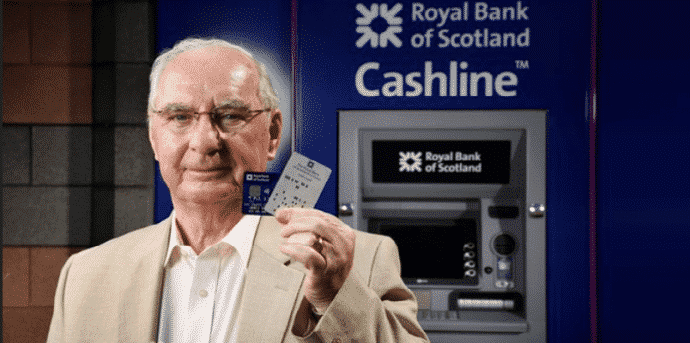I invented ATM and all I earned was $15 for it! Says the man who invented it
Your friendly neighbourhood ATM is celebrating its 50th anniversary this year. The next time you go to withdraw some cash, remember to send a silent thank you note to the inventor of ATM who got a paltry $15 for his game changing invention.
Its all about your stars. Mark Zuckerberg created Facebook and is now worth an estimated $50 billion. On the other hand, James Goodfellow invented a game changer machine which is used millions of people around the world every day and it got him nothing. Facebook is useful just for social life but ATM has become a necessity for many of us. In fact, on the eve of the 50th anniversary of his invention, the 79-year-old told Guardian Money that he earned just $15 from the patent, and has not made a penny more from it since.
“You can imagine how I feel when I see bankers getting £1m bonuses. I wonder what they contributed to the banking industry more than I did to merit a £1m bonus. It doesn’t make much sense to me, but that’s the way of the world,” Goodfellow told Guardian Money.
Goodfellow came up with a groundbreaking invention that spawned several industries and generated billions of pounds, “and I got nothing, so who’s going to want to follow in James Goodfellow’s footsteps and get $15 if they have a fantastic success?”
Comparing Goodfellow with Zuckerberg is a no brainer. While Zuckerberg has secured a place on the Forbes list of billionaires and a multimillion-dollar portfolio of property and land in California, New York and Hawaii, Goodfellow has had to settle for a three-bed house in the Scottish town of Paisley.
On the other hand everybody throughout the globe knows Zuckerberg and his famous website while nobody save a few academically oriented fellows can recall Goodfellow or associate him with ATM.
Back in the mid-1960s Goodfellow was working as a development engineer for Glasgow firm Kelvin Hughes, part of Smiths Industries, and had been charged with devising a way to enable customers to withdraw cash from banks when Saturday opening ended. “Most people working during the week couldn’t get to the bank. They wanted a solution. The solution was a machine which would issue cash on demand to a recognised customer,” he recalls. “I set out to develop a cash-issuing machine, and to make this a reality I invented the pin [personal identification number] and an associated coded token.”
This token took the form of a plastic card with holes punched in it. The patent documents proposed a system incorporating a card reader and buttons mounted in an external wall of the bank, and stated: “When the customer wishes to withdraw a pack of banknotes from the system he simply inserts his punched card in the card reader of the system, and operates the set of 10 push-buttons in accordance with his personal identification number.” Aside from the cards with punched holes, that pretty much describes today’s ATM.
After Goodfellow successfully demonstrated the methodology by producing a model, the go-ahead was given for prototypes to be built, and the first Chubb-branded machines were installed at branches of Westminster Bank (later to become NatWest) in 1967. Goodfellow received an OBE in 2006 from the United Kingdom government for services to banking as “patentor of the personal identification number”.

